Academic Avant Garde
When Matthew Vassar established his “Magnificent Enterprise,” women were for the first time offered college courses in art history, astronomy, botany, chemistry, geography, history, mathematics, music, physiology, philosophy, political economy, and zoology—all taught by leading scholars of the day—as well as physical education.
Today, the college’s hallmark liberal arts curriculum encompasses more than 1,000 courses, offered through 45 academic departments and degree programs. They range from Africana Studies, Anthropology, and Biochemistry, to Chinese and Japanese, English, Environmental Studies, Hispanic Studies, Latin American Studies, Neuroscience and Behavior, Physics, Religion, Sociology, and Urban Studies. Vassar has continued to demonstrate why it ranks among the academic avant garde.
1864
Vassar becomes the first college or university in the country founded with a teaching collection of original art works (now numbering over 18,000, including pieces by Rembrandt, Picasso, O’Keeffe, Pollock, and significant Hudson River School painters). The collection was originally housed in the Vassar College Art Gallery in Main Building; it’s now housed in the Frances Lehman Loeb Art Center, a campus building designed by architect César Pelli and named in honor of the building’s primary donor, a member of the Class of 1928. (Read more.)
1887
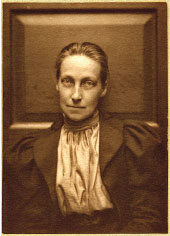
Vassar establishes its trend-setting and convention-breaking History Department under the direction of Lucy Maynard Salmon. Rejecting traditional methods of teaching history—with their emphasis on memorizing facts and figures, and their dependence on scholarly literature—Salmon famously urged her students to “go to the source”; to compare and criticize multiple interpretations before forming a conclusion; to question scholarly authority and consult primary source material in addition to secondary scholarship. Salmon’s convictions led to the expansion of Vassar’s library, and the growth of the college’s archives.
1915
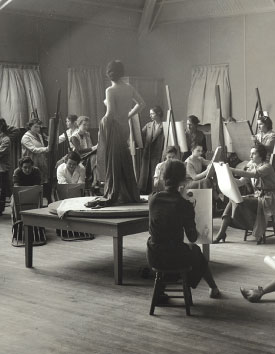
Professor Clarence Kerr Chatterton, head of the Department of Applied Art and Vassar’s first artist in residence, comes to teach at Vassar. At a time when prominent colleges taught basic drawing skills using only still life or sculptural objects as subjects, Chatterton introduced live male and female models to his studio art classes. The move was revolutionary and not without controversy. The college initially required a chaperone for the class, but soon dropped the requirement as the practice became standard for other studio art departments across the country.
1916
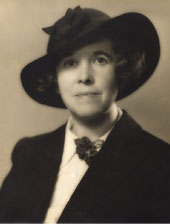
Vassar becomes the first of the Seven Sisters to establish a drama program, the Vassar Dramatic Workshop. But it was the arrival of Hallie Flanagan Davis in 1925 that really set Vassar apart. She held a deep conviction that the act of creating art—dramatic production—was educational and should be offered for credit. In 1927 she began producing plays at the Experimental Theater of Vassar College, and together with Winifred Smith ’04, who taught dramatic literature at Vassar beginning in 1911, succeeded in getting approval for three practical courses: dramatic production, advanced dramatic production, and playwriting. What began as the Vassar Dramatic Workshop became the Division of Drama in 1938.
1935
After years of informal classes, Vassar becomes the first women’s college to officially offer instruction in Russian. The department expands greatly after 1946, following the addition of Catherine Wolkonsky to the faculty. Wolkonsky redefined the way Russian was taught to English speakers, and Russian scholars consider her A Dictionary of Russian Roots to be the definitive study of the structure of the Russian language.
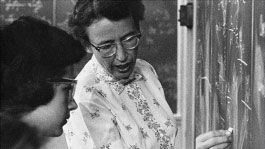
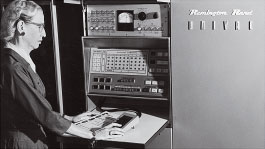
1963
Vassar becomes one of the first liberal arts colleges in the country to establish a computer center and offer computer science courses (and later, a major). Vassar’s computing legacy is largely due to the early work of two alumnae-turned-professors Grace Murray Hopper ’28 and Winifred Asprey ’38, who had been a student of Hopper.
1969
Less than one year after San Francisco State University launches the first Black Studies program in the nation, Vassar establishes the Africana Studies program (also then known as Black Studies), originally located at the Urban Center for Black Studies in Poughkeepsie. In the years that followed, some 600 such programs and departments would come into existence. Africana Studies remains the college’s longest-running multidisciplinary program, offering more than 40 courses from more than a dozen academic departments.
1970
Vassar approves the creation of one of the first undergraduate multidisciplinary majors in the country, then called Man and the Human Community. Today, that major is Science, Technology and Society, which draws upon professors from more than half a dozen academic departments.
1982
Vassar becomes the first institution in the world to offer an undergraduate degree in cognitive science.
1986
The Undergraduate Research Summer Institute (URSI) launches. It remains one of the nation’s oldest undergraduate science research programs, notable also for its presence at a liberal arts college.
Vassar also launches the Exploring Transfer (ET) program, which introduces promising community college students (typically first-generation college students from populations underrepresented in higher education) to the potential of transferring to a four-year college or university. The Commission on Independent Colleges and Universities called Vassar a “forerunner,” and the wildly successful program “pioneering.” Thanks in large part to the ET program, in 1999 Vassar was named the Time Magazine/Princeton Review College of the Year. In the 25-year history of the program, more than 1,000 students have participated.
1999
Vassar launches the interdisciplinary Media Studies Development Project to explore the formation of a formal academic program in the emerging field of mass media viewed from a contemporary perspective. This was distinct from traditional communications and journalism programs. The Media Studies Program officially launches in 2004, and graduates its first majors in 2006.
2000
The Environmental Studies Program receives certification from New York State, officially cementing a century and a half of environmental leadership at Vassar. Starting with some of the earliest faculty—Charles Farrar, Sanborn Tenney, and Darwinist James Orton—who established early natural history programs, and continuing with early alumnae such as Ellen Swallow Richards, Class of 1870, the first American to use the term “ecology,” Vassar begins to make the environment a priority.
2004
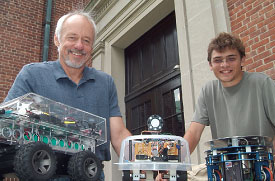
The Interdisciplinary Robotics Research Laboratory opens its doors with a National Science Foundation grant and matching funds from Vassar College. Using primarily CoroWare machines and the Microsoft Robotics Studio software, the lab provides robotics research space for faculty and students, as well as for student teams competing in Vassar’s annual robotics competition, held each spring.
2006
The Environmental Risks and Breast Cancer (ERBC) project debuts, the result of more than two years of collaborative work by faculty and Vassar undergraduates. More than 45,000 copies of its initial CD are sent (upon request) to sites in more than 100 countries. The overwhelming demand leads to the launch of the ERBC website (in English and Spanish) highlighting the often-ignored environmental risks associated with breast cancer in women and men.
